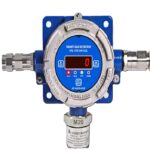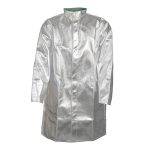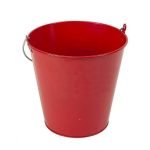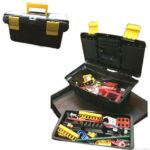Your list is empty, add products to the list to send a request
What Triggers Fire Sprinklers to Go Off?

17
Aug
Fire safety is a critical aspect of building design and management. One of the most effective fire protection systems is the automatic fire sprinkler system. But have you ever wondered what actually triggers these sprinklers to activate? In this comprehensive guide, we’ll explore the inner workings of fire sprinkler systems, their components, and the various factors that cause them to go off.
Understanding Fire Sprinkler Systems
Fire sprinkler systems are an integral part of modern fire safety infrastructure. They consist of a network of pipes filled with water or a fire-suppressing agent, connected to sprinkler heads strategically placed throughout a building. These systems are designed to detect and respond to fires quickly, often before they can spread and cause significant damage.
Components of a Fire Sprinkler System
- Sprinkler heads: These are the visible parts of the system, typically seen on ceilings or walls.
- Piping network: A system of pipes that deliver water or fire-suppressing agents to the sprinkler heads.
- Water supply: Usually connected to the main water supply or a dedicated fire water tank.
- Control valves: Used to regulate water flow and pressure in the system.
- Alarm devices: Such as the hooter alarm or emergency exit light, which alert occupants when the system activates.
How Fire Sprinklers Are Triggered
Contrary to popular belief, smoke alone does not trigger fire sprinklers. The activation of a fire sprinkler is a result of heat detection. Here’s how it works:
The most common trigger for fire sprinklers is heat. Each sprinkler head contains a heat-sensitive element, typically a glass bulb filled with a glycerin-based liquid or a metal fusible link.
- Temperature Threshold
When the ambient temperature around a sprinkler head reaches a specific threshold (usually between 135°F to 165°F or 57°C to 74°C), the heat-sensitive element responds.
- Activation Mechanism
- For glass bulb sprinklers: The liquid in the bulb expands and shatters the glass.
- For fusible link sprinklers: The metal link melts.
- Water Release
Once the heat-sensitive element is compromised, it releases a plug that holds back the pressurized water in the pipes. Water then flows through the open sprinkler head, spraying in a specific pattern to suppress the fire.
Types of Sprinkler Systems
- Wet Pipe Systems: Most common, always filled with water under pressure.
- Dry Pipe Systems: Pipes filled with pressurized air or nitrogen, used in areas prone to freezing.
- Pre-Action Systems: Combines features of wet and dry systems, often used in areas with sensitive equipment.
- Deluge Systems: All sprinkler heads open simultaneously, used in high-hazard areas.
Factors Influencing Sprinkler Activation
Several factors can influence when and how fire sprinklers activate:
- Type of Fire: Different fires produce heat at varying rates. For example, a kitchen fire extinguisher might be needed for fast-spreading grease fires before sprinklers activate.
- Ceiling Height: Higher ceilings may delay sprinkler activation as heat takes longer to reach the sprinkler heads.
- Room Size: Larger spaces may require more heat to trigger sprinklers.
- Ventilation: Air currents can affect heat distribution and sprinkler activation.
- Sprinkler Head Rating: Different sprinkler heads are rated for various temperature thresholds.
Common Misconceptions About Fire Sprinklers
- Smoke Activation: As mentioned earlier, smoke alone does not trigger sprinklers.
- All Sprinklers Activate at Once: In most cases, only the sprinkler heads near the fire will activate.
- Water Damage: Modern sprinkler systems are designed to minimize water damage while effectively suppressing fires.
Maintenance and Testing
Regular maintenance is crucial for ensuring the reliability of fire sprinkler systems. This includes:
- Inspection: Regular visual inspections of sprinkler heads, pipes, and valves.
- Testing: Periodic testing of water flow, pressure, and alarm systems.
- Replacement: Timely replacement of damaged or outdated components.
- Documentation: Keeping detailed records of all maintenance activities.
Additional Fire Safety Equipment
While sprinkler systems are highly effective, a comprehensive fire safety plan should include other equipment such as:
- Fire extinguisher: Various types including ABC stored pressure fire extinguisher, CO2 fire extinguisher, and foam type fire extinguisher.
- Fire hose reel: Including hose reel drum and fire hose reel pipe.
- Fire alarm systems: With components like heat detectors and smoke detectors.
- Emergency lighting: Such as emergency exit light and emergency light.
Sprinkler System Components
Let’s delve deeper into some key components of sprinkler systems:
- Sprinkler Heads:
- Upright sprinklers: Installed on pipes above ceilings.
- Pendent type sprinkler: Hang down from the ceiling.
- Sidewall sprinkler: Installed on walls.
- Fire Hose Equipment:
- Hose box: Protects fire hoses.
- Landing valve: Connects fire hoses to the water supply.
- Fire hydrant valve: Outdoor water access point for firefighters.
- Control Valves:
- Breeching inlet: Allows fire department to pump water into the system.
- 4 way fire brigade inlet: Multiple connection points for fire trucks.
- Alarm Devices:
- Hooter alarm: Audible warning system.
- Response indicator: Visual indicator of sprinkler activation.
Fire Extinguisher Types and Uses
Different types of fire extinguishers are designed for specific classes of fires:
- Class A: For ordinary combustibles (wood, paper, cloth)
- Class B: For flammable liquids
- Class C: For electrical fires
- Class D: For combustible metals
- Class K: For kitchen fires involving cooking oils
Some specific types include:
- Clean agent fire extinguisher: For sensitive electronic equipment
- Kitchen fire extinguisher: Specifically designed for cooking-related fires
- ABC 2kg fire extinguisher: Versatile for multiple fire types
- CO2 4.5 kg fire extinguisher: Ideal for electrical fires
- Water type fire extinguisher: For Class A fires
Innovative Fire Safety Products
The fire safety industry is constantly evolving, with new products entering the market:
- Fire extinguisher ball: Compact, throwable fire suppression device
- Elide fire ball: Self-activating fire extinguishing ball
- Freeze fire extinguisher: Uses a special agent that expands and cools
- Gas leak detector: For early warning of potentially explosive gas leaks
- Beam detector: Uses a beam of light to detect smoke over large areas
Safety Gear for Firefighters and Industry Workers
Proper safety equipment is crucial for those working in high-risk environments:
- Fire safety gloves: Protect hands from heat and flames
- Safety shoes: Brands like Liberty, Hillson, and Bata offer various models
- Kevlar jacket: Provides heat and cut resistance
- Chemical resistant safety shoes: For working with hazardous materials
FAQs about Fire Sprinklers (Firesupplies Brand)
Q: How often should I have my Firesupplies sprinkler system inspected?
A: Firesupplies recommends annual professional inspections, with more frequent visual checks by property owners.
Q: Can Firesupplies sprinkler heads be painted?
A: No, painting sprinkler heads can interfere with their proper function and is not recommended by Firesupplies.
Q: How long do Firesupplies sprinkler systems typically last?
A: With proper maintenance, Firesupplies sprinkler systems can last 20 years or more.
Q: Does Firesupplies offer retrofitting services for older buildings?
A: Yes, Firesupplies provides retrofitting services to bring older buildings up to current fire safety standards.
Q: Are Firesupplies sprinkler systems noisy?
A: No, Firesupplies sprinkler systems operate silently until activated, at which point you may hear water flowing.
Conclusion: Protecting Lives and Property
Fire sprinkler systems are a crucial component of modern fire safety infrastructure. Understanding how they work and what triggers them can help building owners and occupants better appreciate and maintain these life-saving systems.
For all your fire safety needs, trust Firesupplies – your one-stop shop for high-quality fire protection equipment. From state-of-the-art sprinkler systems to a wide range of fire extinguishers and safety gear, Firesupplies has everything you need to keep your property and loved ones safe. Don’t wait for a fire to strike – be prepared with Firesupplies. Visit our website or Contact us today to learn more about our products and services. Let Firesupplies be your partner in fire safety and prevention.



























